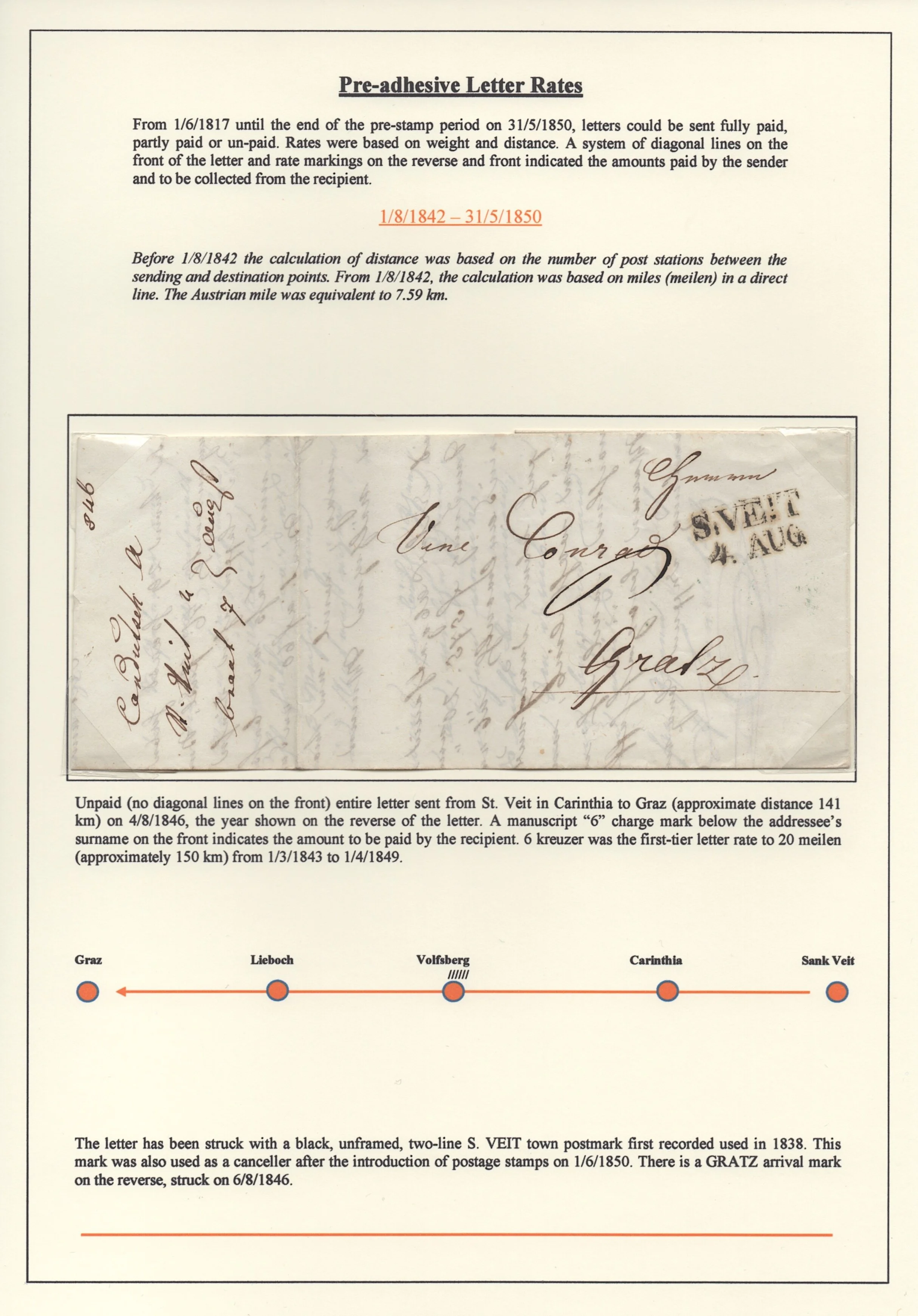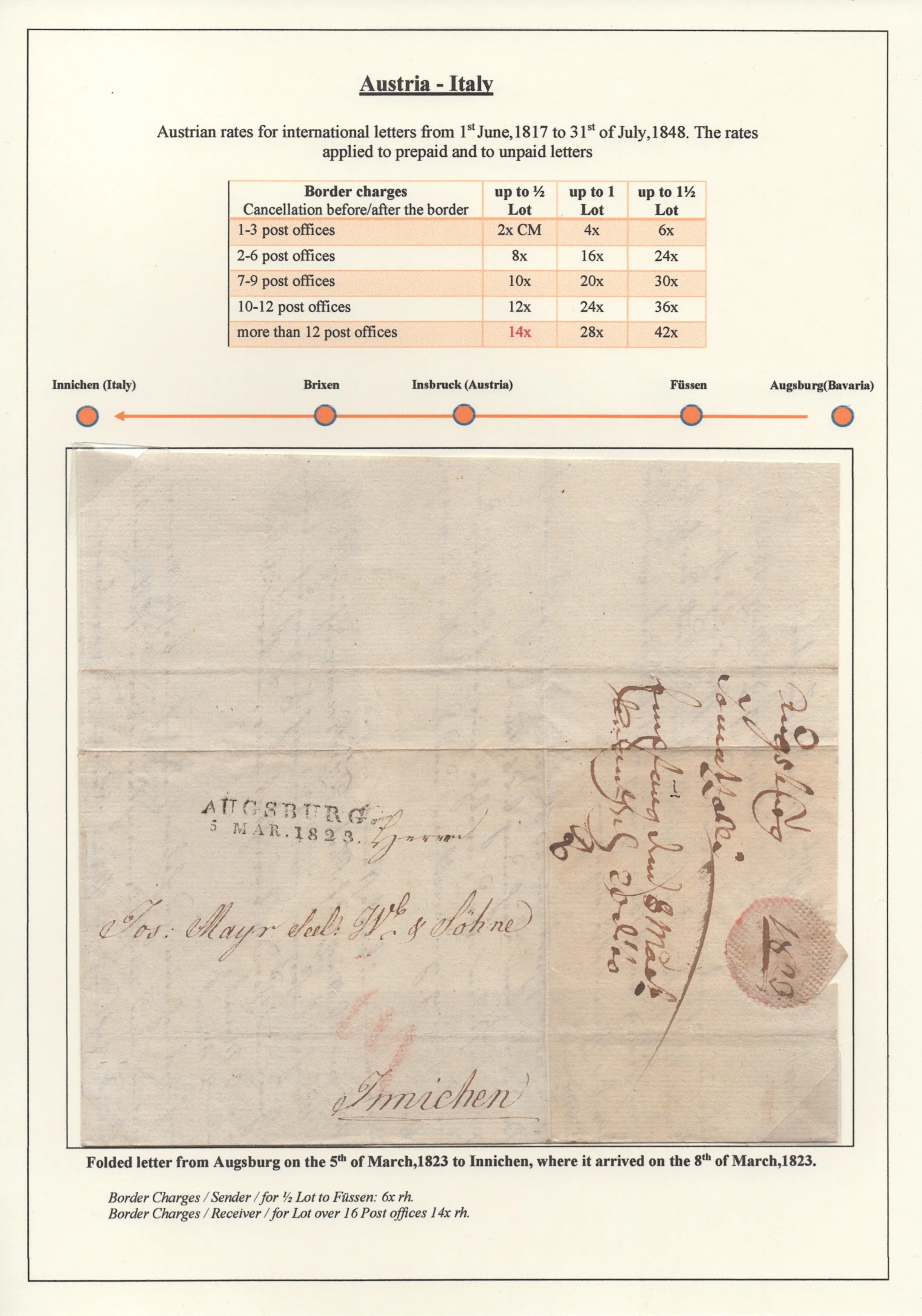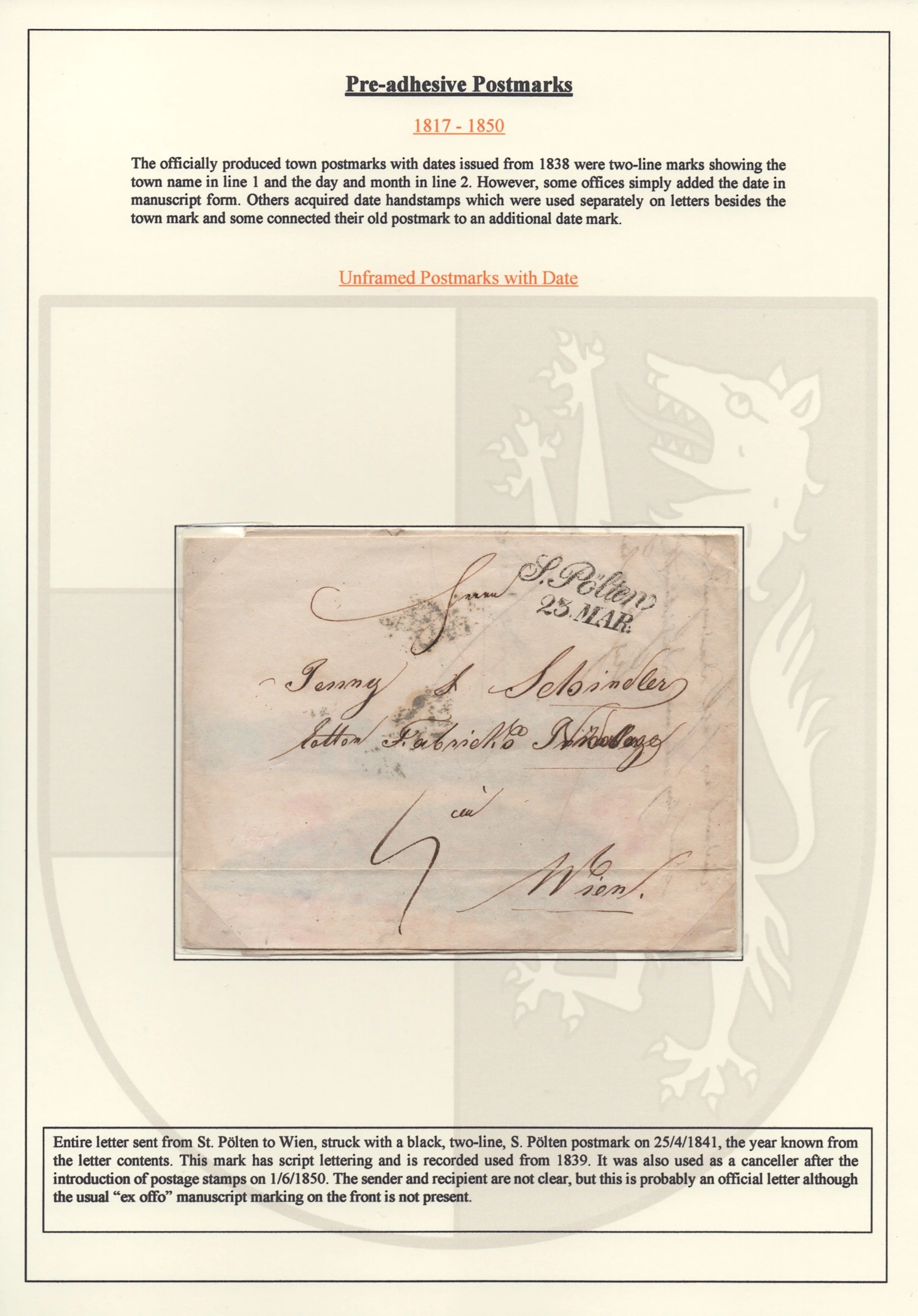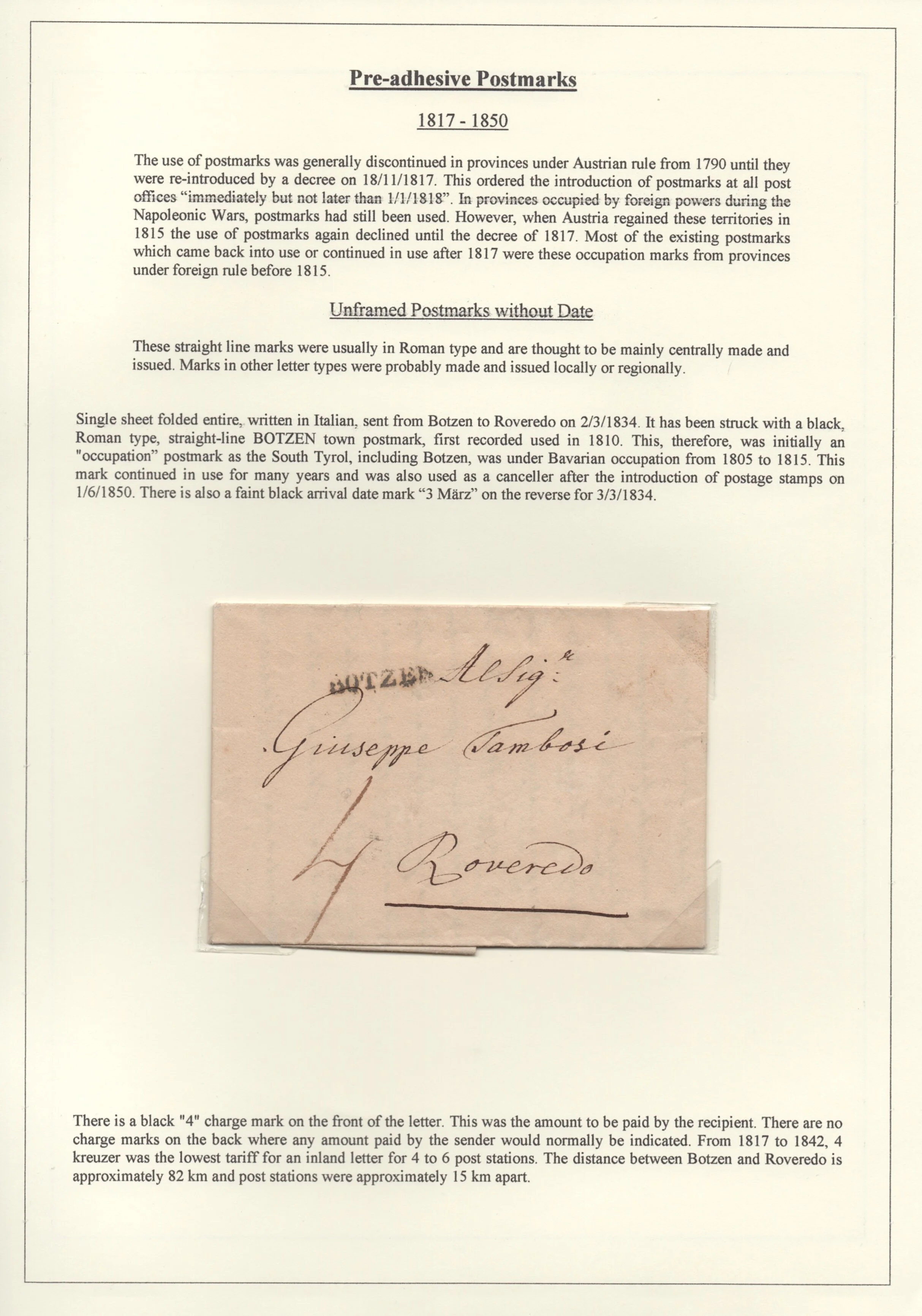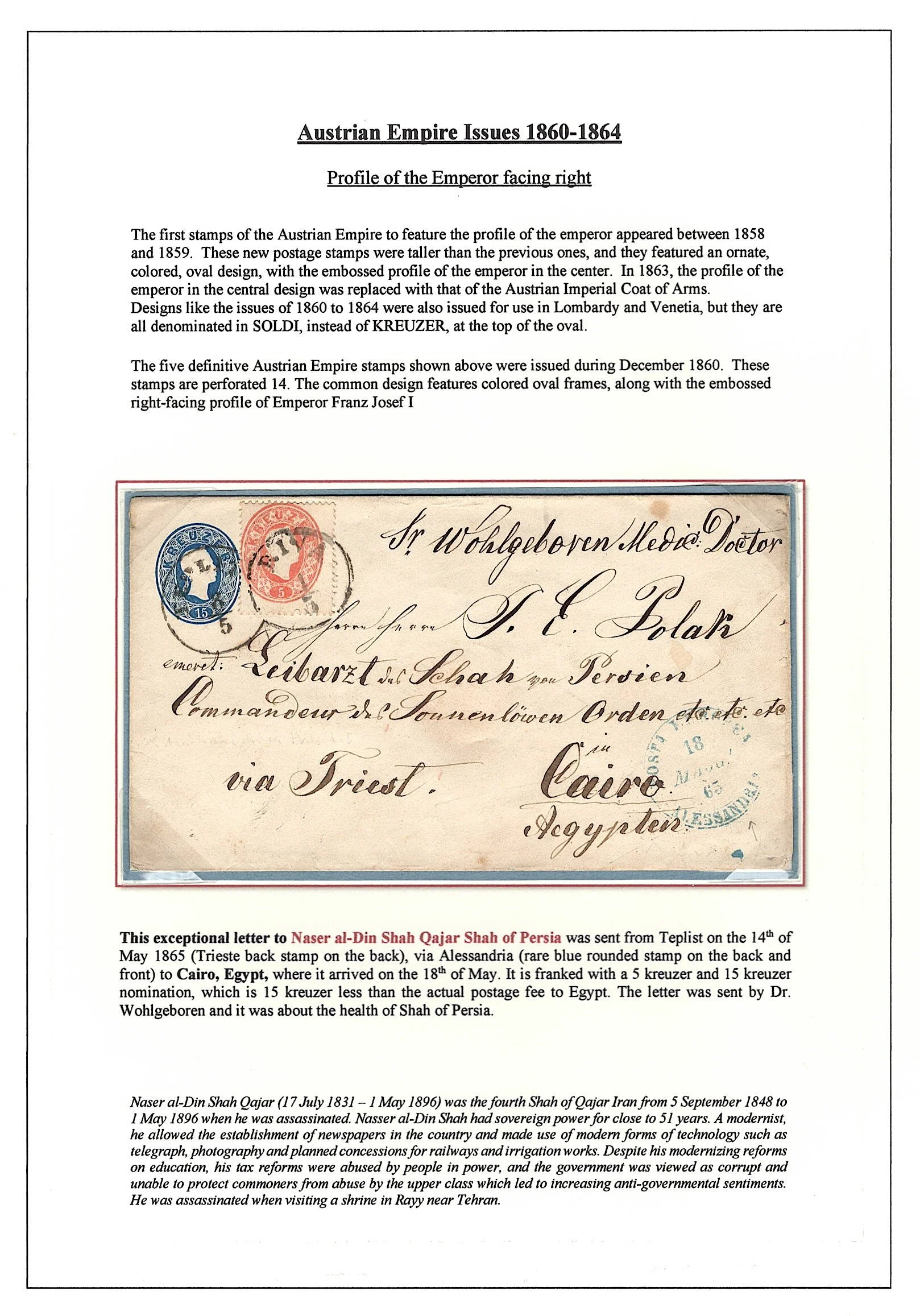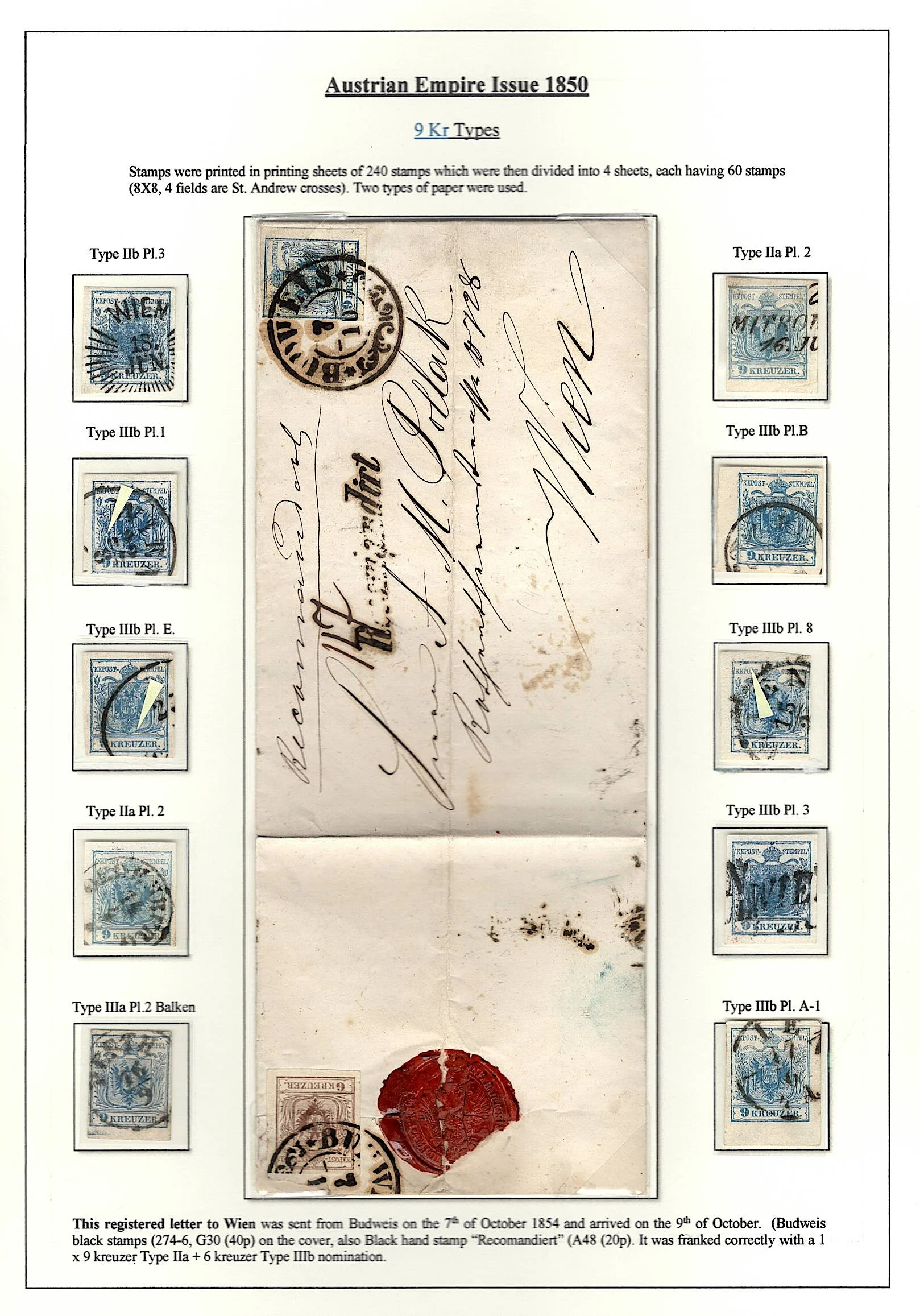"From Habsburg Scrolls to Philatelic Treasures: The Evolution of the Austrian Postal System (1796-1959)"
The history of the Austrian postal system from 1796 to 1959 is a captivating tale of innovation, adaptation, and the birth of philately. During this period, Austria's postal services underwent remarkable changes, including the introduction of postage stamps. This collection try to explore the evolution of the Austrian postal system and the crucial role postage stamps played in enhancing efficiency and communication.
The Habsburg Postal System
In the late 18th century, the Habsburg Monarchy's postal system was characterized by a network of post offices, courier routes, and handwritten addresses on letters. Mail delivery was often slow and inconsistent, reflecting the limitations of the era.
The Postal Reforms of 1850
Birth of the Postage Stamp: Inspired by the British Penny Black, Austria issued its first postage stamp, the "Austrian Newspaper Stamp," in 1850. This adhesive stamp, featuring the denomination in kreuzer and a portrait of Emperor Franz Joseph I, marked the beginning of a new era in postal services.
Uniform Postal Rates: The introduction of postage stamps allowed Austria to establish uniform postage rates across its vast territory. Regardless of the distance between sender and recipient, letters could be sent at fixed rates, simplifying postal transactions.
Efficiency and Convenience: Postage stamps provided a level of efficiency and convenience previously unseen in postal services. Senders could now prepay postage, reducing delays caused by on-the-spot payments and enabling a smoother mail-handling process.
Security and Authentication: Postage stamps served as a form of security and authentication, preventing unauthorized use of the postal service and ensuring that letters were genuine.
Continued Innovations
Parcel Post: Austria introduced parcel post services in 1883, allowing the shipment of packages alongside regular mail, further expanding the capabilities of the postal system.
Telegraph Services: The integration of telegraph services into the Austrian postal system in the late 19th century enhanced rapid communication, connecting people across the empire.
Annexation and Transition
In the aftermath of World War I and the dissolution of the Austro-Hungarian Empire, Austria became a republic. The postal system underwent changes but retained many of its innovations, including postage stamps.
Philatelic Legacy
Austria's postage stamps, known for their intricate designs and historical significance, became sought-after collectibles worldwide. Special issues, commemorative stamps, and thematic series enriched the world of philately.
The period from 1796 to 1959 witnessed the transformation of the Austrian postal system from handwritten addresses to postage stamps and a more efficient, uniform, and secure mail service. The introduction of postage stamps in Austria marked a significant milestone in postal history, shaping the future of mail services not only in Austria but also globally. The legacy of Austrian stamps endures as philatelic treasures, providing a tangible link to the past and a testament to the enduring impact of postal innovations.
Austria collection was long my second largest collection(largest one is “The Human Errors ”-collection, over 1500 pages), it includes the years from 1796 to 1959. There are at the moment around 50 “exhibition pages” from these years already made - the actually number of the pages is over 400, but those pages have been created already in 1990’s, and now it is time to totally re-create them, so I will add them here, one at the time, as soon as I am able to finalize them - pages below are A4 collection pages. For the exhibition I will change the page size from A4 to A3, and add some other covers, stamps and write deeper information about routes and rates of them.
This collection have been already awarded by Gold at 1992 Stamp Show in Germany, but since then it has been totally rebuilt and around 75% of the material and content has been and will be upgraded. I presume that it will take at least three years until this collection is ready for exhibitions, if ever!










